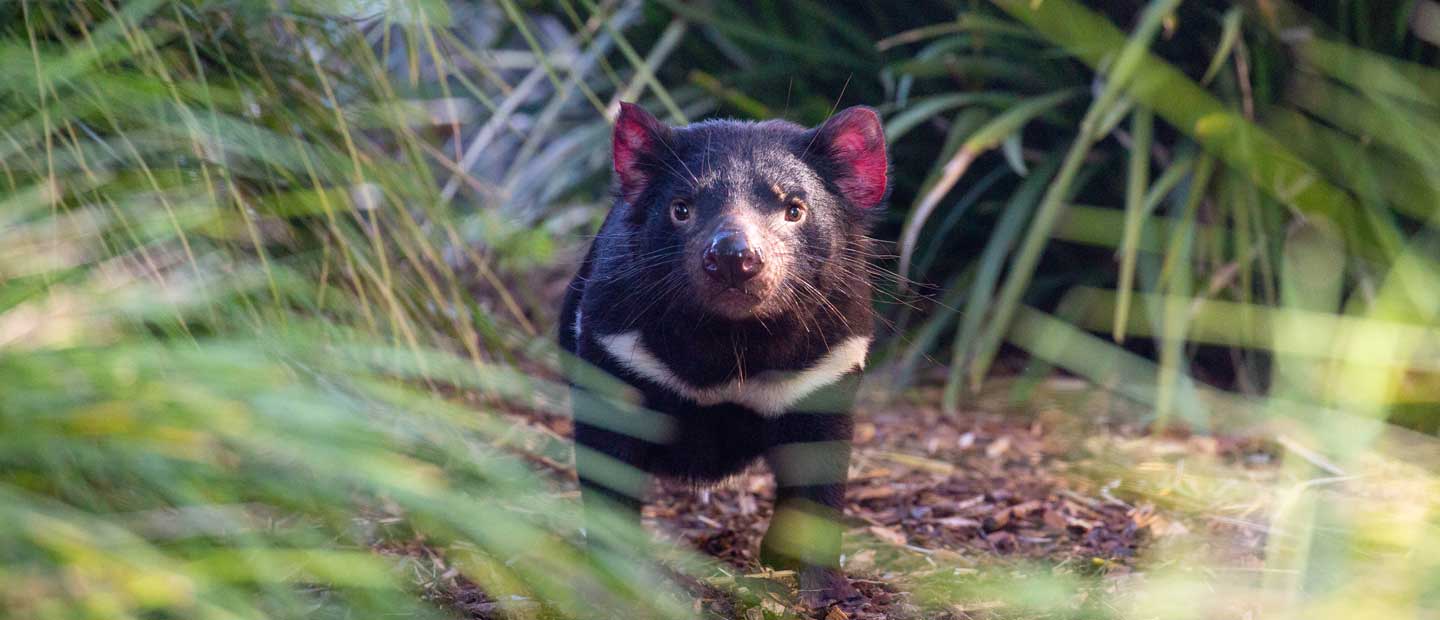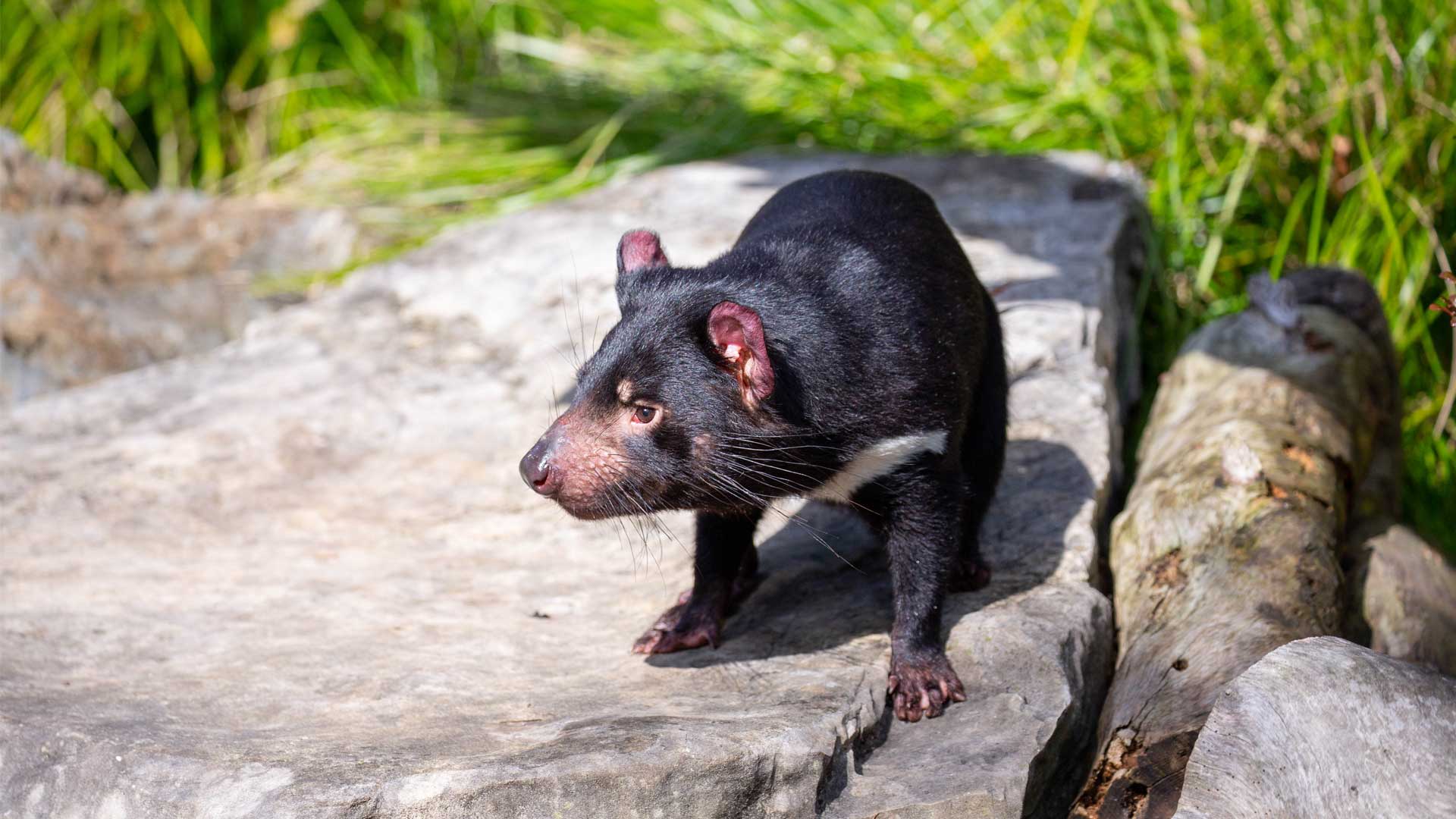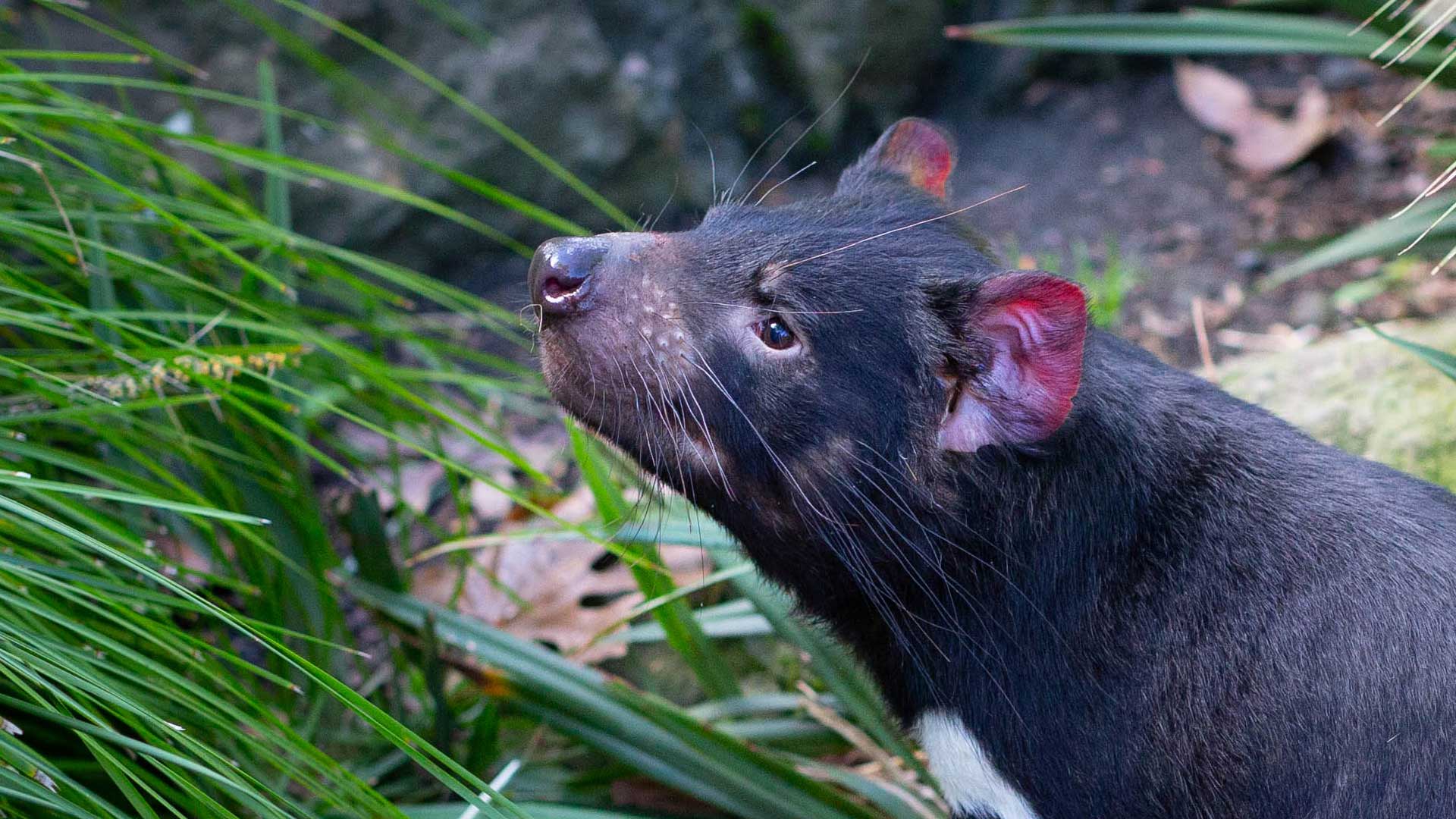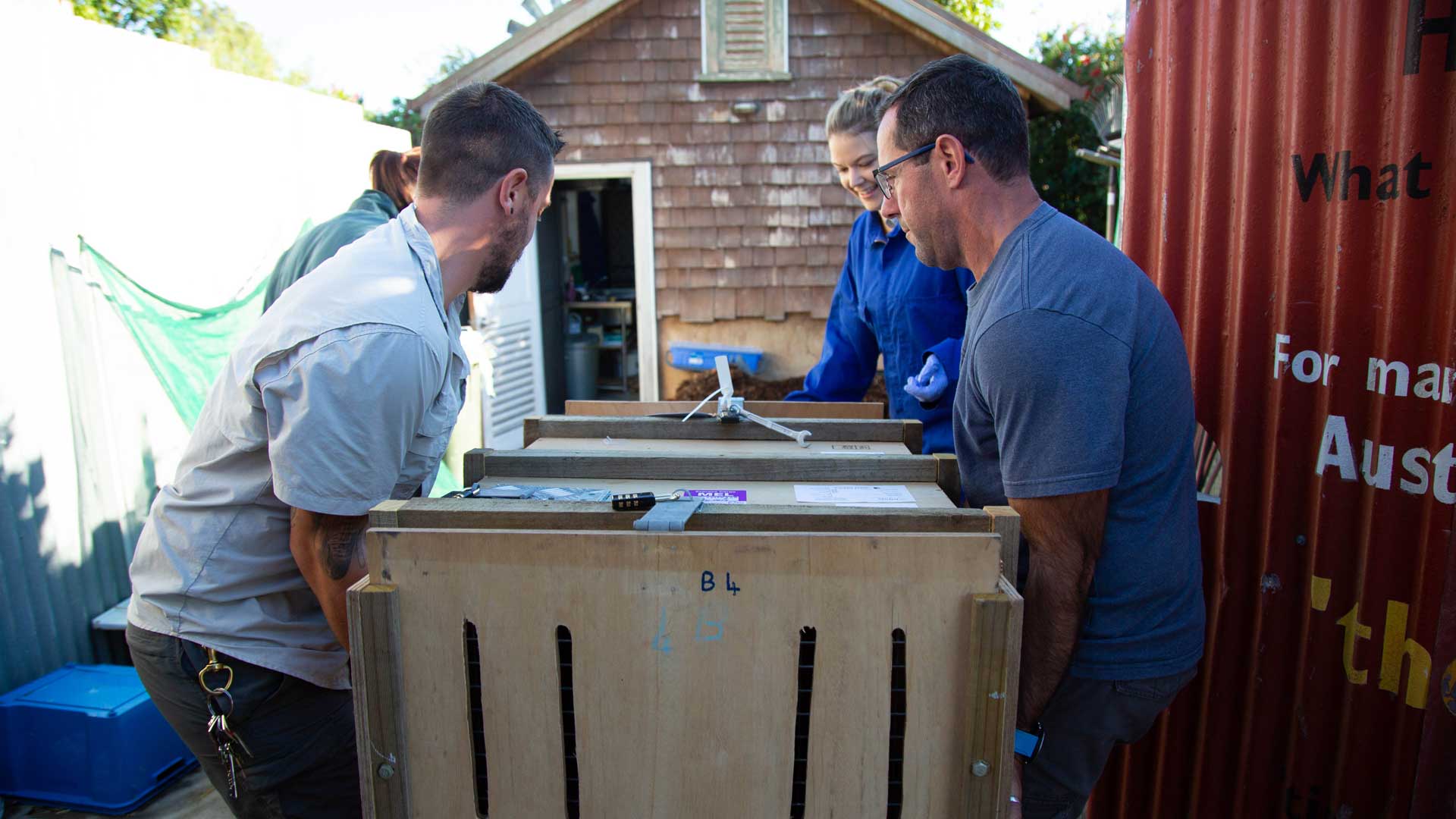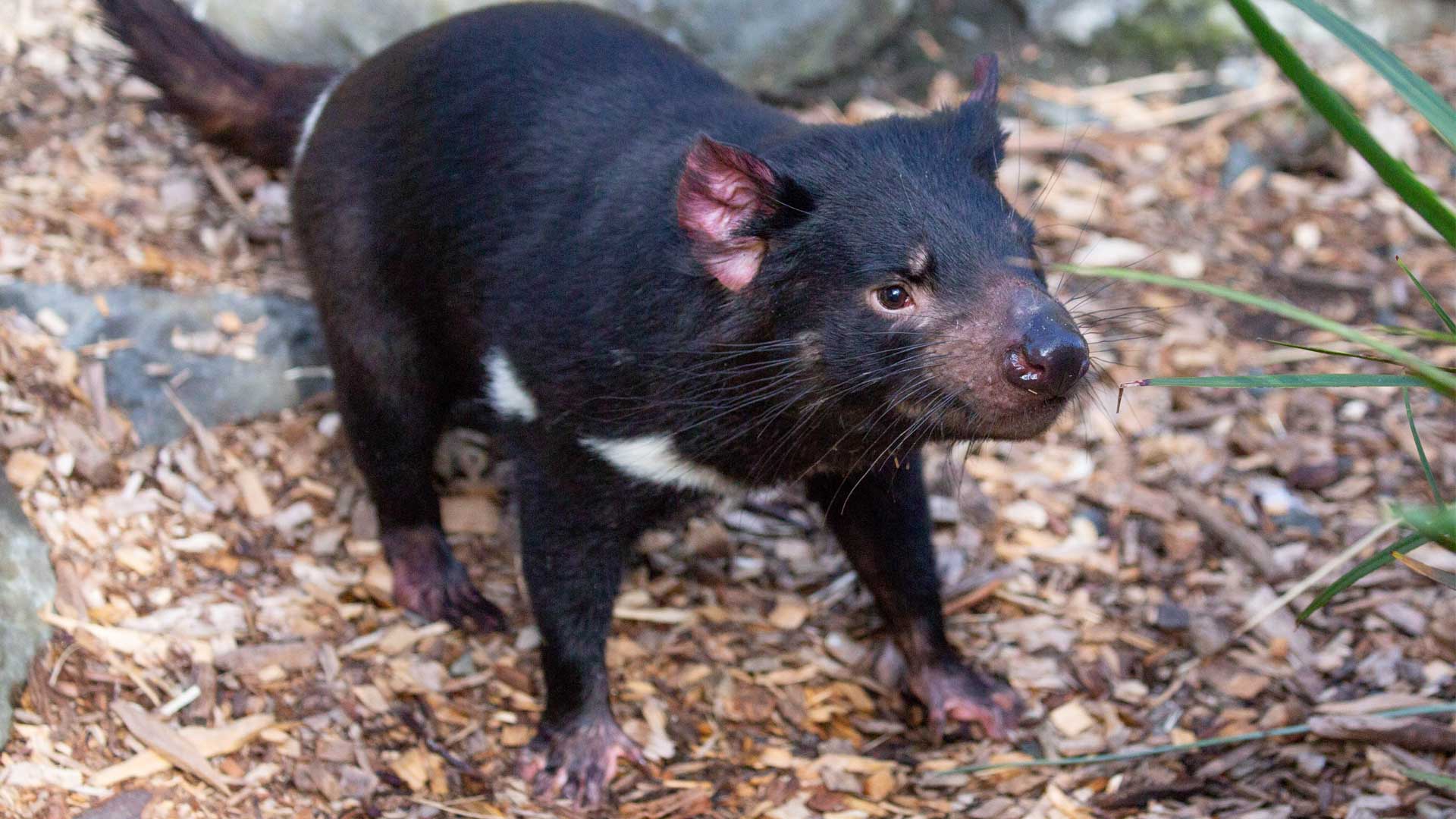Exciting progress
A successful captive breeding programme has now seen the STDP breed and release more than 150 devils to safe places in the wild in Tasmania. This includes Maria Island (a sanctuary off Tasmania’s southeast coast) where healthy devils are breeding very successfully.
David Schaap says as well as breeding healthy devils in captivity, a big focus for the Program is managing Devil Facial Tumour Disease (DFTD) out of the wild. (DFTD is an incurable contagious cancer, characterised by mostly mouth, face and neck tumours).
“While we can’t cure this disease, a vaccine, developed and implemented by the University of Tasmania, is currently going through trials, and the trial is having some positive results.
If we can get more wild animals vaccinated with an effective vaccine, the disease might run out of hosts, and so die out,” says David.
Devil Details
- The Tasmanian devil (Sarcophilus harrisii) is the world’s largest carnivorous marsupial and is nocturnal. Males can grow up to 12kg and females, up to 8kg
- Devils are short-lived (average life expectancy is 5 years in the wild, and up to 7 years in captivity), but very fertile, and females can produce up to 4 offspring annually. (Up to 50 joeys can be born at one time, but just 4 survive as there are only 4 nipples in the mother’s pouch)
- Tasmanian devils have been described as ‘furry little vacuum cleaners’ as they eat dead and often sick animals, which helps prevent the spread of disease, playing a vital role in keeping the ecosystem healthy
- Once widespread throughout Australia, devils are now only found in Tasmania
- Devils store fat in their tails so their bodies have something to draw from when food gets scarce
- When excited or stressed, blood flows to a devil’s ears, and they begin to look bright red
- The Tasmanian devil Ambassador Program, established in 2013, is a collaboration between the Australian government and the Australasian Zoo Aquarium Association (ZAA), and comes under the umbrella of the wider Save The Tasmanian Devil Program
- The Tasmanian devil is classified as ‘Endangered’ by the IUCN (International Union for the Conservation of Nature) Red List and the Federal government of Australia
- Auckland Zoo, Wellington Zoo, Orana Wildlife Park, several American zoos and more recently selected zoos in Japan and Europe are now part of the Tasmanian Devil Ambassador Program (TDAP)


